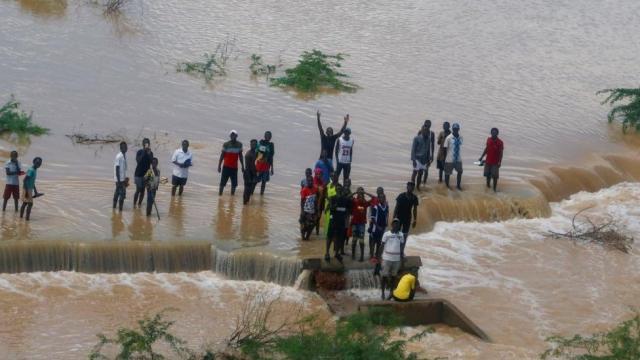As the floodwaters recede in East Africa, residents in Kenya are struggling to deal with the aftermath, with at least 70 killed and tens of thousands driven from their homes.
The floods have washed away many roads and bridges and left others partially destroyed, especially in northern Kenya.
Over 36,000 households have been displaced across the country, according to Kenyan President William Ruto.
Ruto said in an address from State House on Saturday that unfortunately, the nation has lost 70 people across Kenya because of these rains and about 36,160 households have been displaced so far.
The Kenyan leader also warned that cases of cholera and malaria were emerging in some areas. Ruto was due to meet with his cabinet on Monday to discuss the emergency response to the crisis.
Parts of essential infrastructure have been washed away and villages are swamped by flood waters. The Coast, Northern and Central Kenya regions are the worst hit by the El Nino phenomenon.
The Kenyan government has set aside 2.4 billion Kenyan shillings (some 19 million dollars) to support those affected, media reports claim.
Kenya’s meteorological department has forecast that the country will likely continue to see above-average rainfall this season, especially in the central and eastern regions.
Meanwhile, flash flooding in Somalia has now killed at least 50 people and driven nearly 700,000 from their homes, a government official said.
The department said the unusual conditions are being driven by “warmer than average sea surface temperatures (SSTs) over the Central and Eastern Equatorial Pacific Ocean, indicating the presence of El Nino conditions.”
Since October 1, flooding has killed over 100 people in the Horn of Africa and displaced more than 700,000, according to the UN Office for the Coordination of Humanitarian Affairs.
The Horn of Africa region is experiencing torrential rainfall and floods linked to the El Nino weather phenomenon, claiming dozens of lives and causing large-scale displacement, including in Somalia, where the downpours have destroyed bridges and inundated residential areas.
The Horn of Africa is emerging from the worst drought in four decades after multiple failed rainy seasons that left millions of people in need and devastated crops and livestock.









